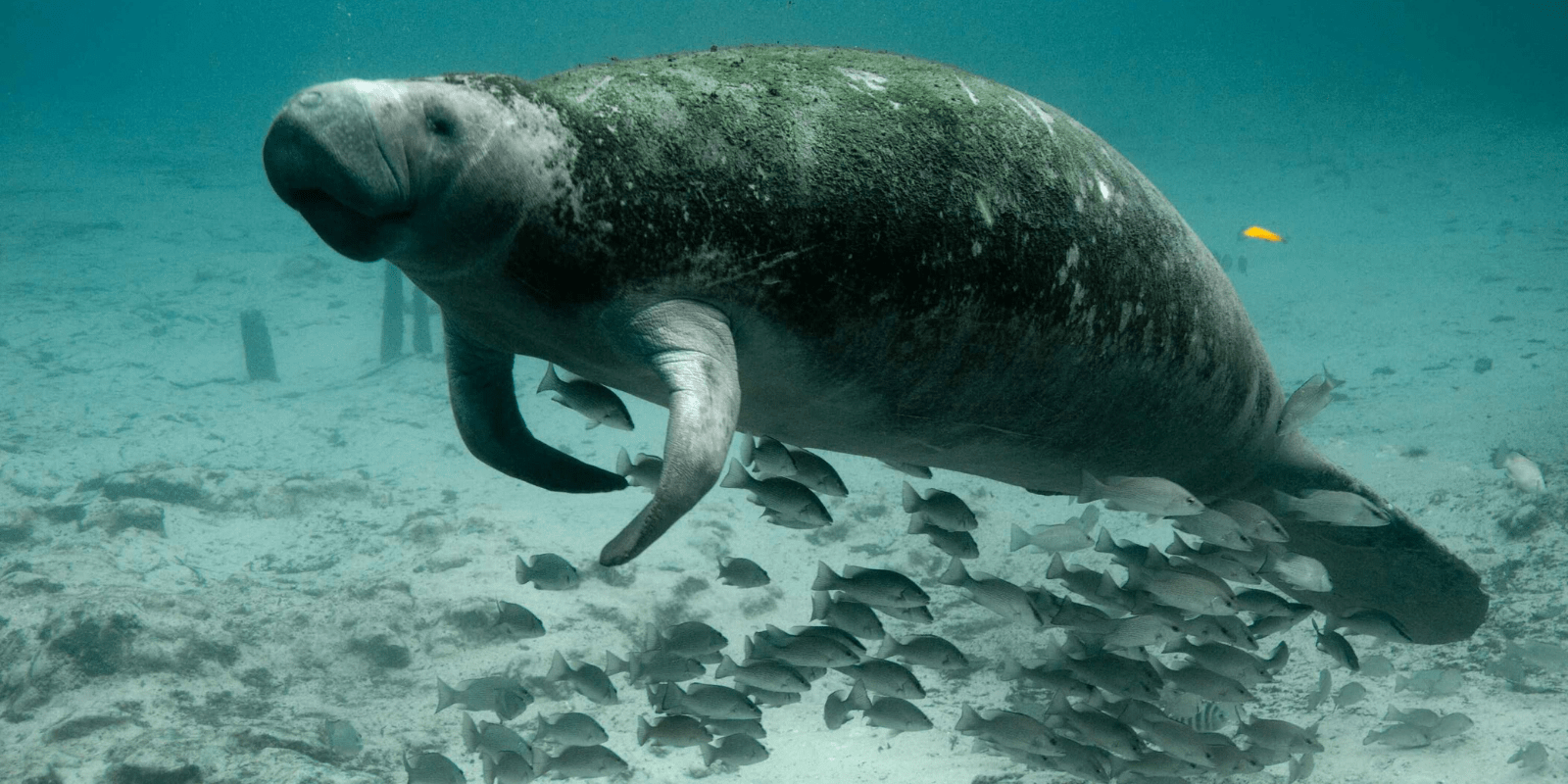We have much more to do and your continued support is needed now more than ever.
Keeping Manatees Warm this Winter

While Florida might not have colorful leaves or crisp evenings to mark the changing seasons, autumn does have a special transition of its own: manatee migration. As water temperatures cool, manatees seek out locations with reliably warm waters. Manatees cluster around the natural springs in northern Florida, the warm power-plant discharges, and some seek out locations in the Everglades which are far enough south to remain relatively warm throughout the winter.
But even in the Everglades, there are a few pockets of “extra-toasty” water that manatees use to endure cold fronts. One of the largest manatee aggregations in the Everglades is at a place called Port of the Islands. In the 1950s and 60s, the natural flow of water through areas of Southwest Florida such as Picayune and Fakahatchee Strands was funneled into canals for a planned community that was never built. These smaller canals converge in the larger Faka-Union Canal, which then spills into a salt-water boat basin at Port of the Islands. As many as 300 manatees are attracted to the mix of freshwater from the canals on the surface, and warmer salt water trapped beneath.
However, as the National Wildlife Federation advocates to restore the Everglades as a whole, several projects are on the books to restore the system’s natural sheet flow, including one that will reduce the Faka-Union canal discharge that provide these manatees their warm-water, winter haven. How do we balance the needs of one species with the restoration of an entire ecosystem?
Creating a Winter Haven for Manatees
“We have long been concerned that filling the canals that flow into Faka Union would result in the loss of warm water within the Port of the Islands Marina,” says Ron Mezich, Imperiled Species Management Section Leader for the Florida Fish and Wildlife Conservation Commission (FWC). “The manatees will need an alternative winter refuge, and thanks to a team of state and federal partners, a solution was developed.”
This new refuge was created on the Rookery Bay Aquatic Preserve using a series of 20-foot deep pools that tapped into the naturally-warmer salt-water aquifer. Known as a “Manatee Mitigation Feature”, the area is also off-limits to boats and people. By reducing disturbance to manatees and boat strikes, the refuge protects manatees from their number one cause of death: collisions with watercraft.
The refuge was a win for wildlife: Manatees began exploring the new area shortly after it was created. Biologists continue to monitor water temperatures and manatee use at the site for the next several years.
This creative solution was truly a partnership – like so much of Everglades Restoration – involving the Florida Fish and Wildlife Commission, U.S. Army Corps of Engineers, U.S. Fish and Wildlife Service, South Florida Water Management District, Florida Department of Environmental Protection, Rookery Bay National Estuarine Research Reserve, and the U.S. Geological Survey.





















